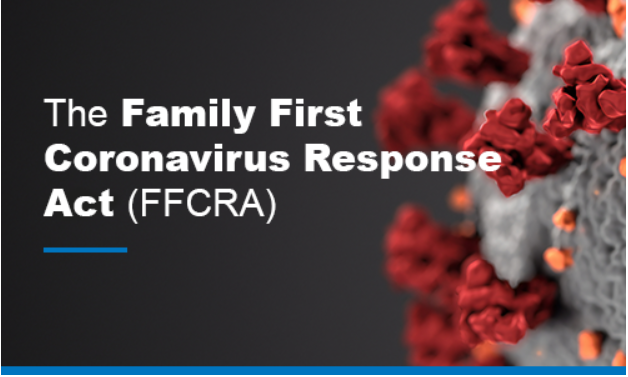Families First Coronavirus Response Act (FFCRA) Update
DOL provides education tools; documenting your small business exemption and other updates
DOL Enforcement
 Under the Families First Coronavirus Response Act (FFCRA), most businesses with fewer than 500 employees must provide up to 80 hours of paid-sick-leave benefits if employees need leave to comply with a self-quarantine order or care for their own or someone else’s coronavirus-related issues. The act also provides emergency paid family leave for parents who can’t work because their children’s schools or child care services are closed due to the pandemic.
Under the Families First Coronavirus Response Act (FFCRA), most businesses with fewer than 500 employees must provide up to 80 hours of paid-sick-leave benefits if employees need leave to comply with a self-quarantine order or care for their own or someone else’s coronavirus-related issues. The act also provides emergency paid family leave for parents who can’t work because their children’s schools or child care services are closed due to the pandemic.
The U.S. Department of Labor (DOL) allowed for a grace period to comply with these mandates and correct mistakes without facing scrutiny, but now the department has officially ramped up its enforcement efforts. The DOL encourages employers and employees use their educational online tools in order to avoid violations.
Small-Business Exemption
The FFCRA offers a limited exemption for struggling small businesses with less than 50 employees. The exemption only applies to paid leave due to school or child care closures or child care unavailability for coronavirus-related reasons. (There is no exemption for paid sick leave.) It can be used if the paid family leave would jeopardize the viability of a small business. The business must be able to show that providing this leave would threaten the company’s ongoing viability in one of three ways:
- The leave would result in expenses exceeding available revenues, causing the business to cease operating.
- The absence of the employees requesting the leave would entail a substantial risk to the capabilities of the operations because of the employees’ unique skills or responsibilities.
- There would not be enough other qualified workers available to perform the work needed to keep operating.
Even if a small business has a strong case to use the exemption, the business is still required to document why it qualifies. An officer of the company should make the determination, document the reasoning, and maintain it in the company’s records. The DOL has stated that businesses should not send any materials to them when seeking the small-business exemption, putting the burden on employers to determine whether the exemption is acceptable.
Fear Not Covered
Employees cannot take FFCRA paid-leave time to self-quarantine without seeking a diagnosis. Workers who remove their children from school or day care solely out of fear of the pandemic and employees who self-quarantine because they are afraid of catching the coronavirus aren’t covered by the FFCRA. This applies even if the employer permits the quarantine. An employee who is at a higher risk may be entitled to paid time off under the FFCRA, even without a health care provider’s order to quarantine, if a stay-at-home order for that demographic is in place.
Timeline for Paid Sick Leave
An employee with symptoms of the coronavirus would be entitled to FFCRA sick-leave from the time they became symptomatic until they recovered or the two weeks of coverage runs out (whichever happens first) if a medical diagnosis confirms COVID 19 infection. If the diagnosis is negative, the employee would be entitled to leave only from the time he or she became symptomatic until receiving the negative test result (not exceeding two weeks).
Visit the DOL’s FFCRA Questions and Answers page or KRS’ Coronavirus Resources Page for additional information. KRS professionals are available and working remotely. Please contact us if you have any questions, concerns, or need advisement during this unprecedented time.



